The Lonesome Hunters brings creator Tyler Crook into his own as a horror auteur
Harrow County artist Tyler Crook takes on writing and art duties for his creator-owned series The Lonesome Hunters
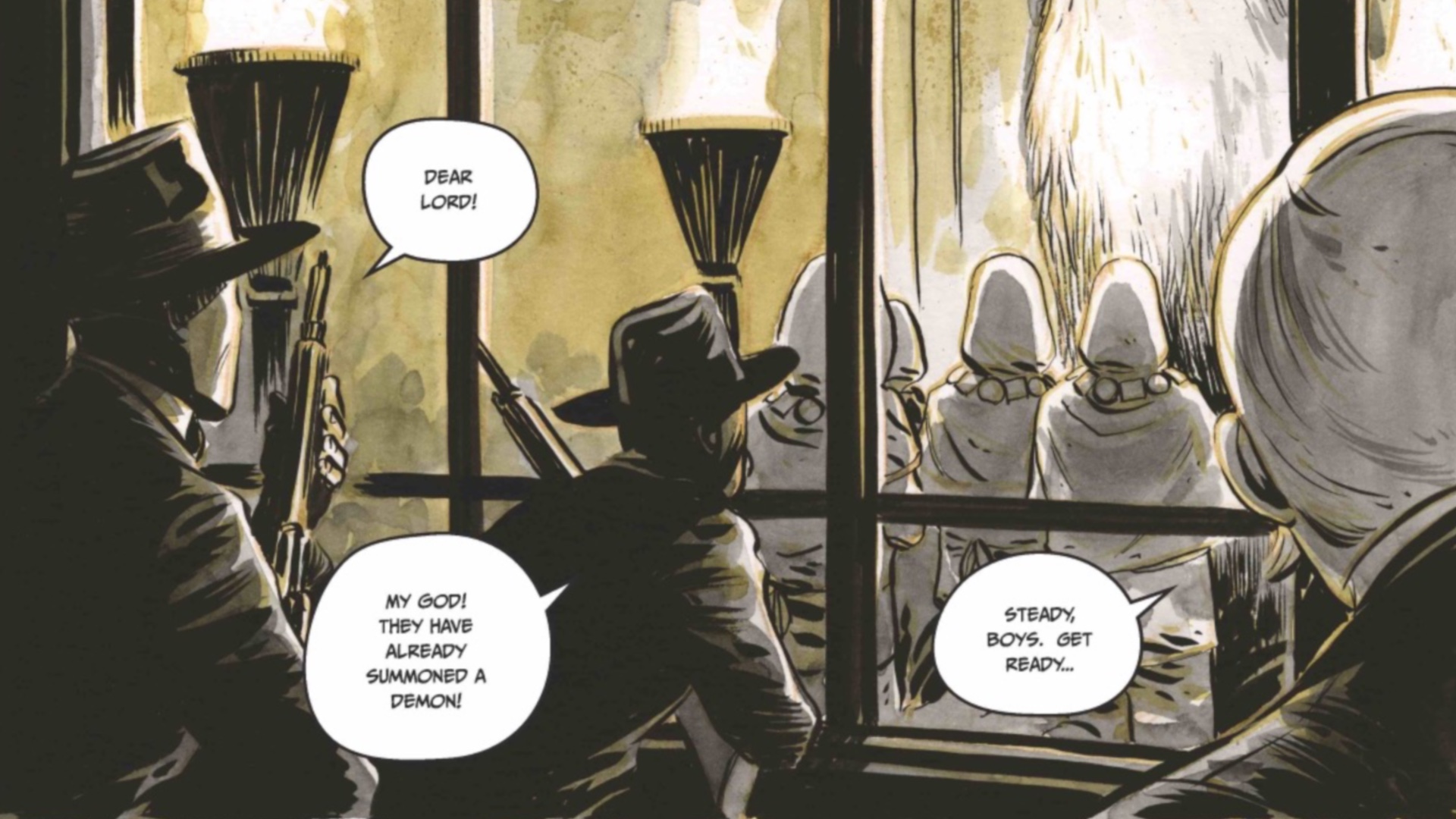
Howard's family told him he was a champion against dark magic. They lied. Now, Howard has spent a century staying as far away from magic as he can. However, his downstairs neighbor Lupe has just been thrown into a magical horrorshow, and only Howard can help. Together, the two of them become an Odd Couple of mages in The Lonesome Hunters by Tyler Crook.
Known for his watercolor depictions of strange Americana in books like B.P.R.D., Colonel Weird: Cosmagog, and Harrow County, Crook is doing double duty as both writer and artist on The Lonesome Hunters, which will be published by Dark Horse Comics on July 22.
Ahead of the series release, Newsarama caught up with him to talk about the comic, his favorite horror, and a couple weird birds. Read on for more, and make sure to tell your local comic book shop to order the Lonesome Hunters now - FOC is Monday, May 30.
Grant DeArmitt for Newsarama: Starting off Tyler, talk to me about the magpies. They were so creepy in this book. Where did they come from?
Tyler Crook: That's really hard because I started working on The Lonesome Hunters a long time ago, just before I did that Witchfinder book. I want to say that was nine years ago now maybe. Magpies were there from the beginning, but I don't remember where they came from. It's funny; I've gotten into birds recently but I don't know what the connection is. I think birds are weird and cool. We got chickens a couple years back, and that was actually probably one of the things that got picking this project back up and working on it.
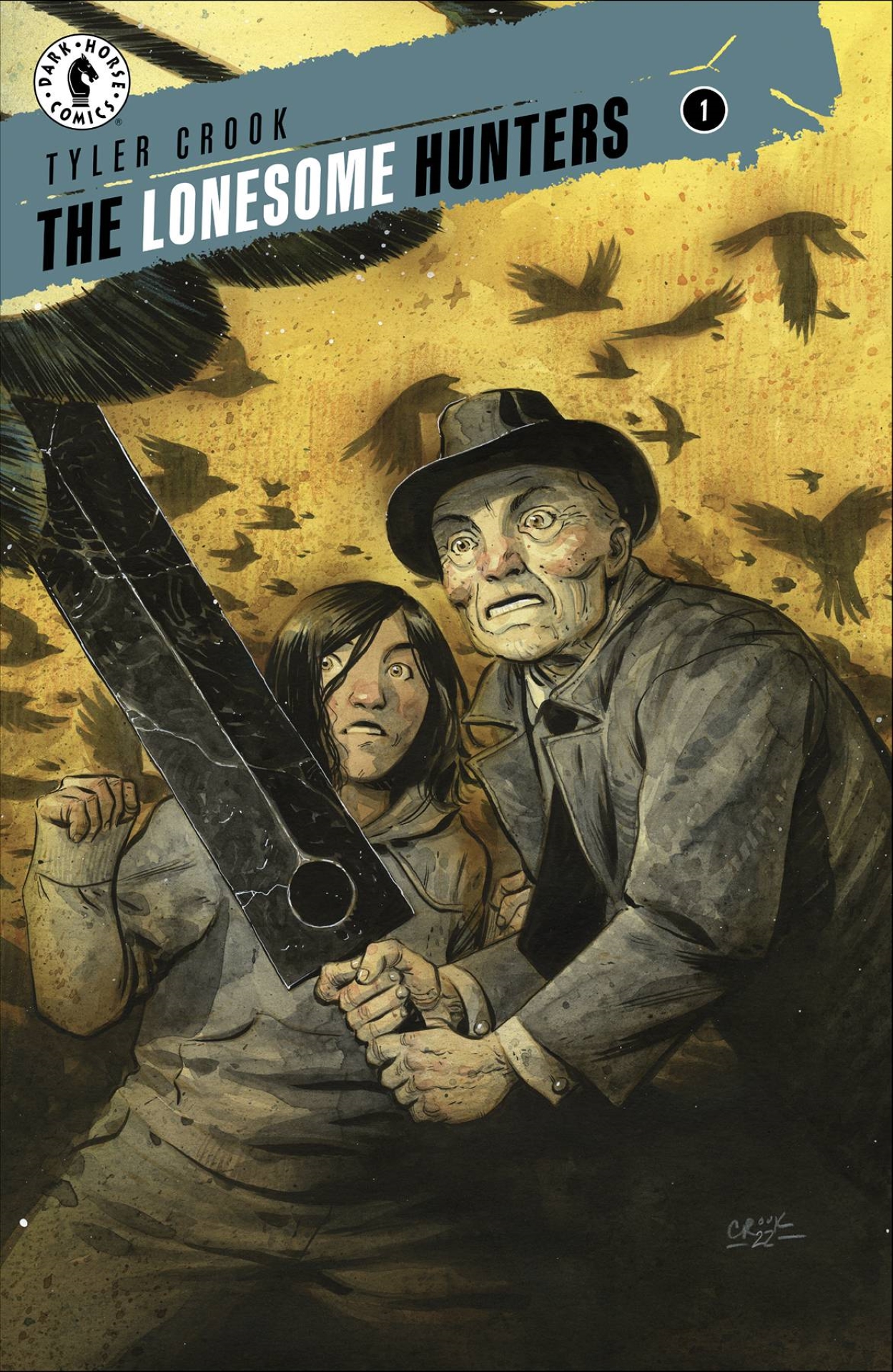
The thing about the magpies that I've always liked is the notion that they collect shiny things. I've always wanted to know what that might be about. In doing research for this book, I learned that's not actually true. It's a folklore thing. Magpies don't collect [shiny things] more than any other bird.
Nrama: I definitely had that as something that I accepted as fact.
Comic deals, prizes and latest news
Get the best comic news, insights, opinions, analysis and more!
Crook: Well, in The Lonesome Hunters, they definitely care about shiny objects.
Nrama: Do you have a source from which you're, pulling folklore-wise? There's an occult aspect of this book that feels really grounded in folk horror. Is that what you're pulling from?
Crook: Honestly, I'm trying to pull from as many folklore and occult sources I can find. There's some Freemason stuff at the very beginning of the book. The magpies are sort of inspired by largely European folklore, but also some Native American beliefs and stories about animals taking the forms of humans. There are going to be a lot of ancient beliefs as the comic progresses. We're just going to barely touch on it at this part of the series.
Nrama: This part of the series? Does that mean that there will be more Lonesome Hunters after these four issues?
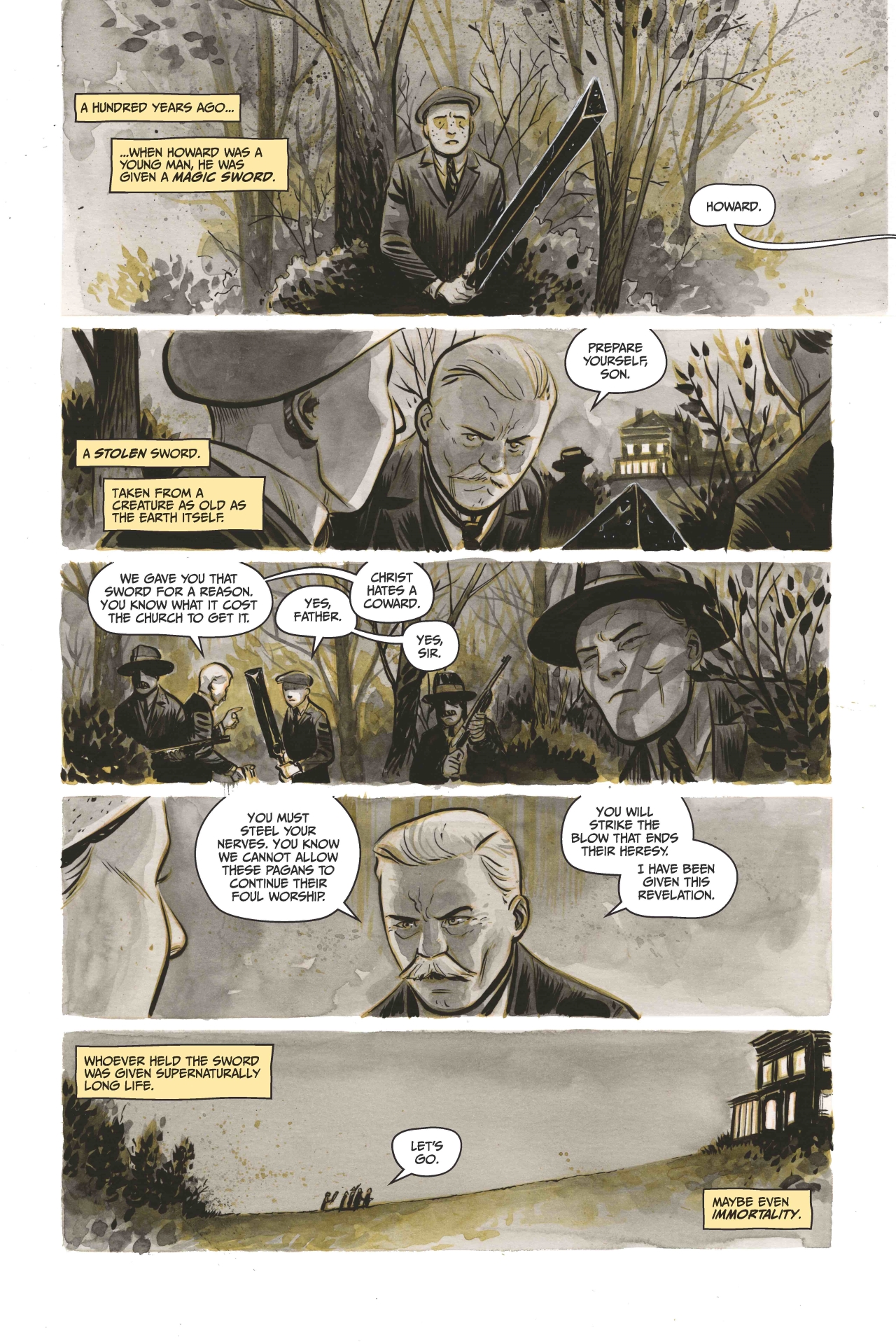
Crook: Knock on wood. I'm hoping I can keep it going for a while. There's a lot of story to tell with these two characters.
Nrama: So is this comic more of a Hellboy thing? Like, were you thinking you'd create these characters and then put them in a world full of infinite adventures?
Crook: I don't think there's an infinite amount of possibilities. But I think I have had this notion that I wanted to tell a story about how these characters meet up and start adventuring. You know, I see people talk about this book and say that they're excited for a classic "monster hunter" kind of story. But I think once people read it, they're going to see that it's not quite that. At least, not in the way that they expected to be. These characters are a little bit different than what people are used to.
Nrama: Right, like the character of Howard. He might have started out as a traditional monster hunter, but that changes quickly.
Crook: Yeah, it's pretty clear in the first four pages that he is not the person that other people in the story expect him to be. I don't know if I should say more. This is the first series I'm doing as a writer, so it's hard to navigate knowing what is a spoiler and what is not. I did a couple of backup stories in Harrow County, but yes this is my first full series.
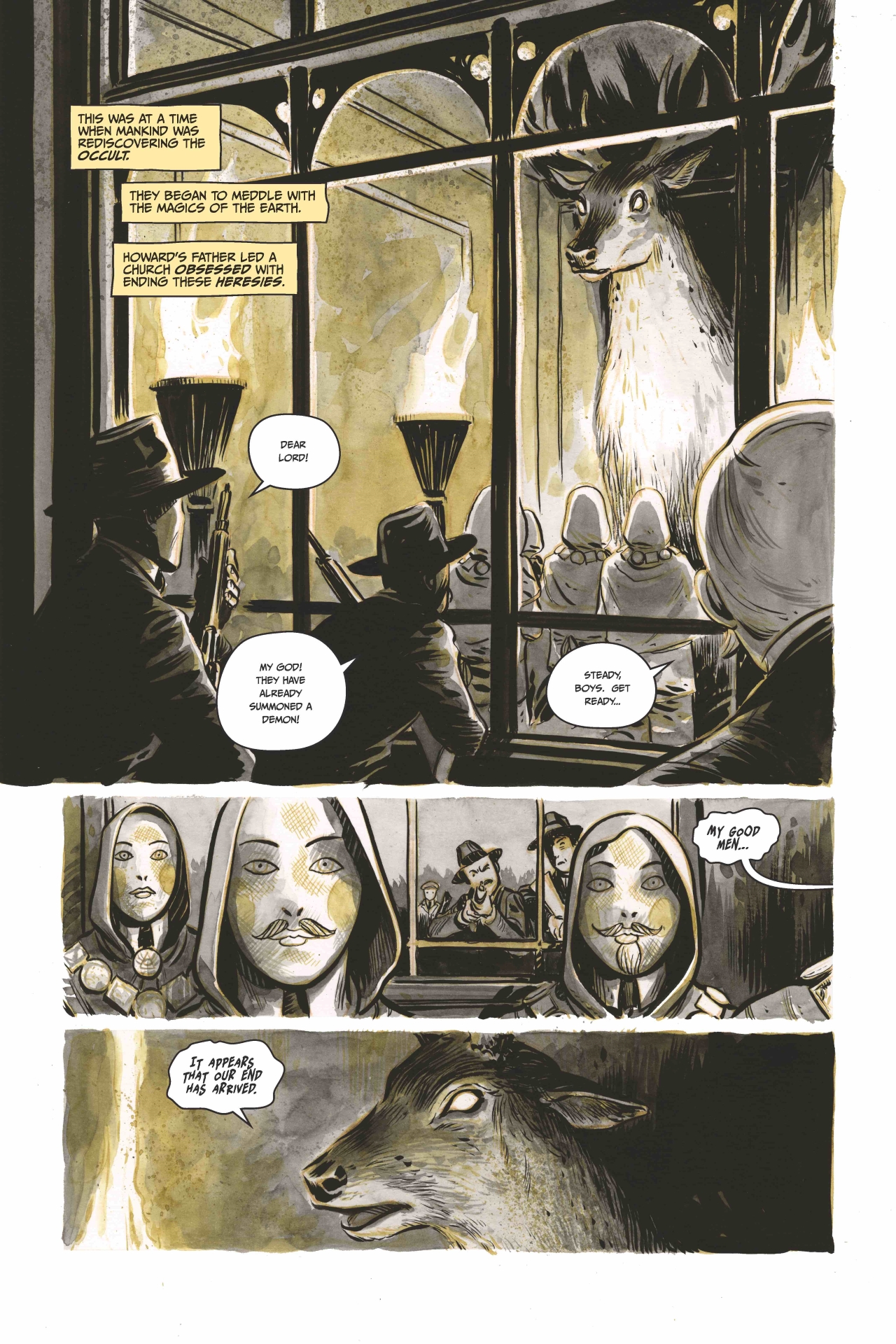
Nrama: Are you approaching it differently at all as both artist and writer? Did you still end up writing a traditional script?
Crook: I did not write a script in a traditional sense. I'm new to writing, so my process is still sort of in development, but the way I approach this was to outline and outline and outline. I probably did five or six different drafts of the outline before I got it where I wanted it. Then I did really rough thumbnails with dialogue just written right on top to get my first pass of the dialogue. Then I penciled, then I typed out the dialogue a little bit more, and then I colored it.
The thing that's really nice about writing and drawing it is that [the story] does feel more malleable. Normally, once I get a script from a writer, we don't want to do a lot of changing things up. But there's a lot of things, story things, that I don't find until later. I pinpoint them and I'm like, "oh crap, I've got to fix this." Because I'm also the writer, I can just do it. I don't have to do a whole email thread or anything like that. Which is nice.
Nrama: Would you say then that it's a smoother process?
Crook: No. Absolutely not. It's just as hard. There's always that discussion on Twitter about who does what, a writer versus an artist. It's true that both the writing and drawing the story are both very hard to do. So basically I just made it twice as hard by writing it myself.
Nrama: How much did your work on Harrow County influence the Lonesome Hunters?
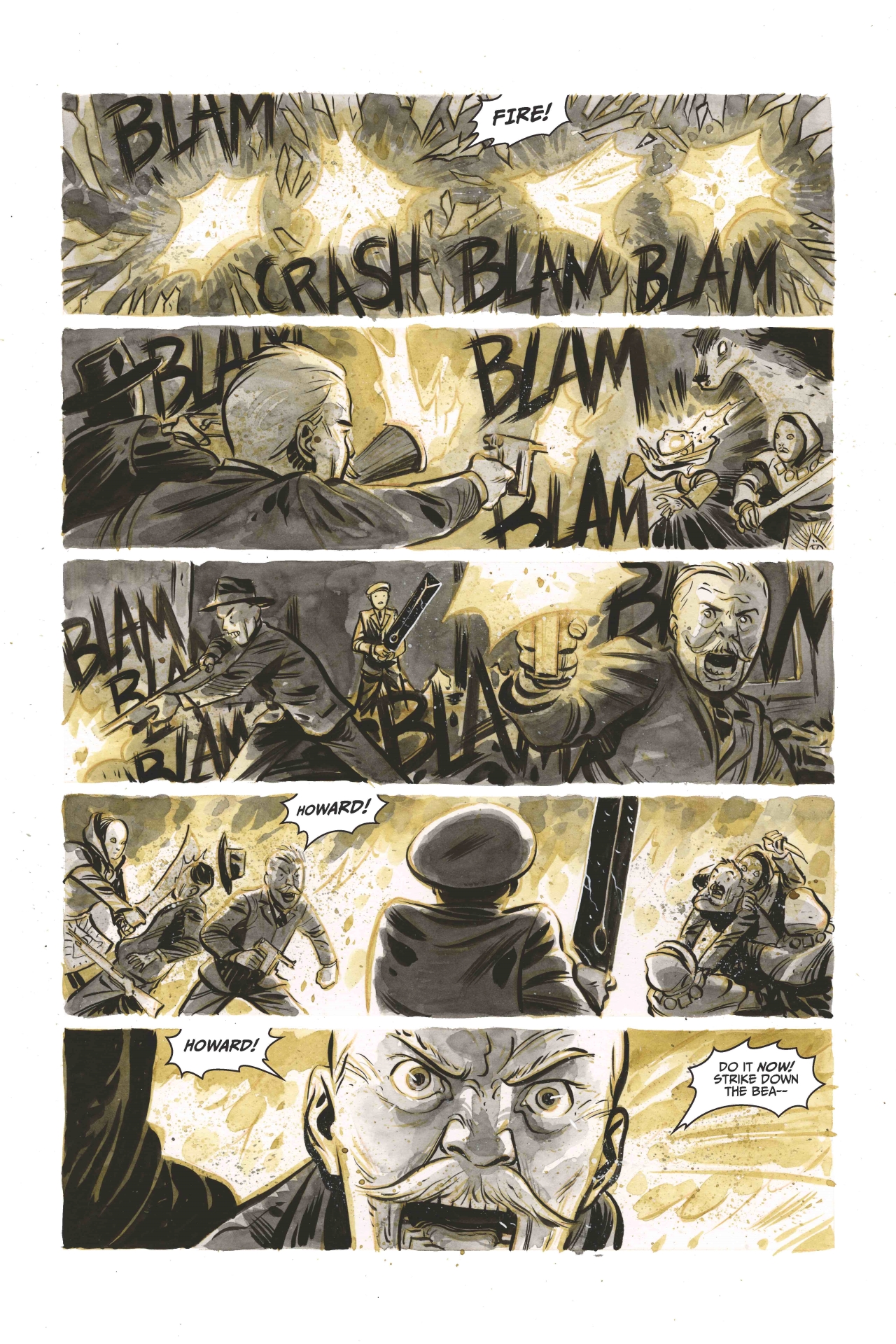
Crook: Harrow County is such a fun project, mostly because [writer] Cullen [Bunn] and I are really on the same wavelength when it comes to telling stories. Especially telling spooky stories. We both really like spookiness. It's a much better thing to do with comics than gory horror or shock horror stuff because that little bit of spooky is a lot more emotional, I think, than trying to do other types of horror. So we both lean towards that.
Now that I'm writing this one, I'm able to do that as much as possible. I think the horror stuff that resonates with me is stuff that is rooted in human experiences. I'm way more scared of that than, "oh, here's that special kind of monster that has eight legs instead of six." The thing that is scary to me is the human reaction.
Nrama: Can you give me an example of that? What's a horror-based in human experience?
Crook: I think a really classic example is that Buffy the Vampire Vampire Slayer episode where Buffy's mother is dead and no one can speak to them. All these people are trying to deal with the trauma and they can't talk about it, but then there is also actually a monster chasing them around. Still, the fighting and the running around stuff is really secondary to that metaphor for the real-life drama that the characters are going through.
Also, one of my favorite things we ever did in Harrow County was this story arc where some hunters come to Harrow County. They have all these hunting dogs, and when they interact with our character called The Abandoned, they do this thing where they raise their heads up like they're going to howl… but then they don't actually make any noise. They're just doing this weird thing.
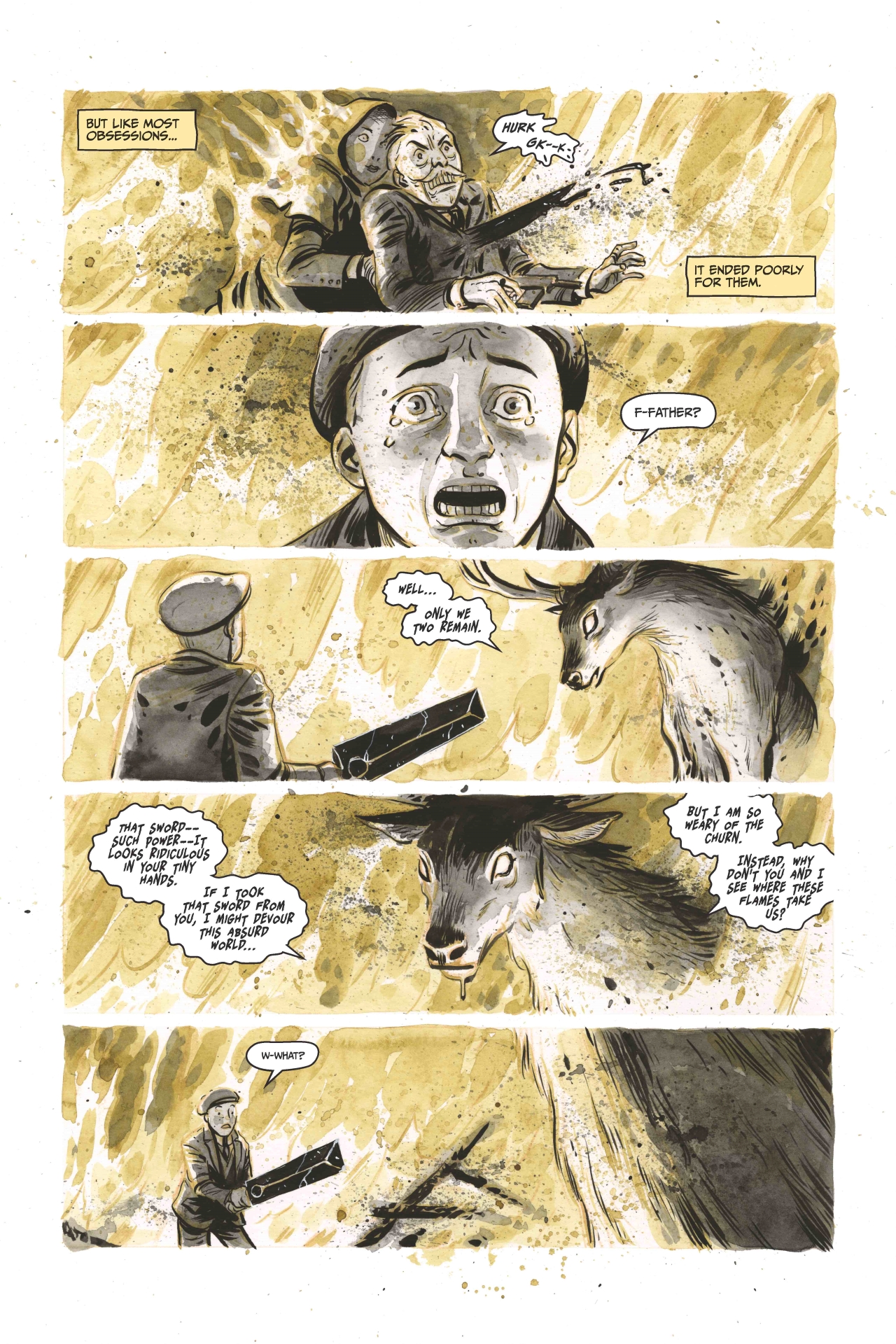
I love that because, if my dog was doing something like that, it would freak me the hell out. It's just weird enough to be like, "that's not right," but also, "that could actually happen."
Of course, I like other stuff. I love pure magic to happen and I like that sort of thing, but I do like it once things are based in a reality so that we can break that reality and have an impact and meaning.
Nrama: Speaking of creating reality, I wanted to talk about your color palette in this book. You use these muted brown, kind of parchment colors. Why?
Crook: My process of getting to the color palette was a little weird. A lot of it comes from just liking yellows. That might sound very strange, but I think yellow in general is one of those colors that is the basis of so much. If you want to brighten red, you just add a yellow to it. The chroma of the yellow makes it glow. The same is true for green, if you want your green to be bright and glowing you add it and it brings that chroma level up.
So I was attracted to doing things in a very warm color because I was just enjoying using a lot of yellows, the physical process of painting those. But I wanted it to feel rooted in reality like I keep saying, and also feel a little bit soft, a little bit dreamy. There are kind of a lot of things in the book that are kind of vignetted. There's a little dark around the corners of the panel, sort of like you're looking at an old photo of something. But I didn't want it to be a fully limited palette, so I'm sort of reserving that for flashbacks and stuff like that.
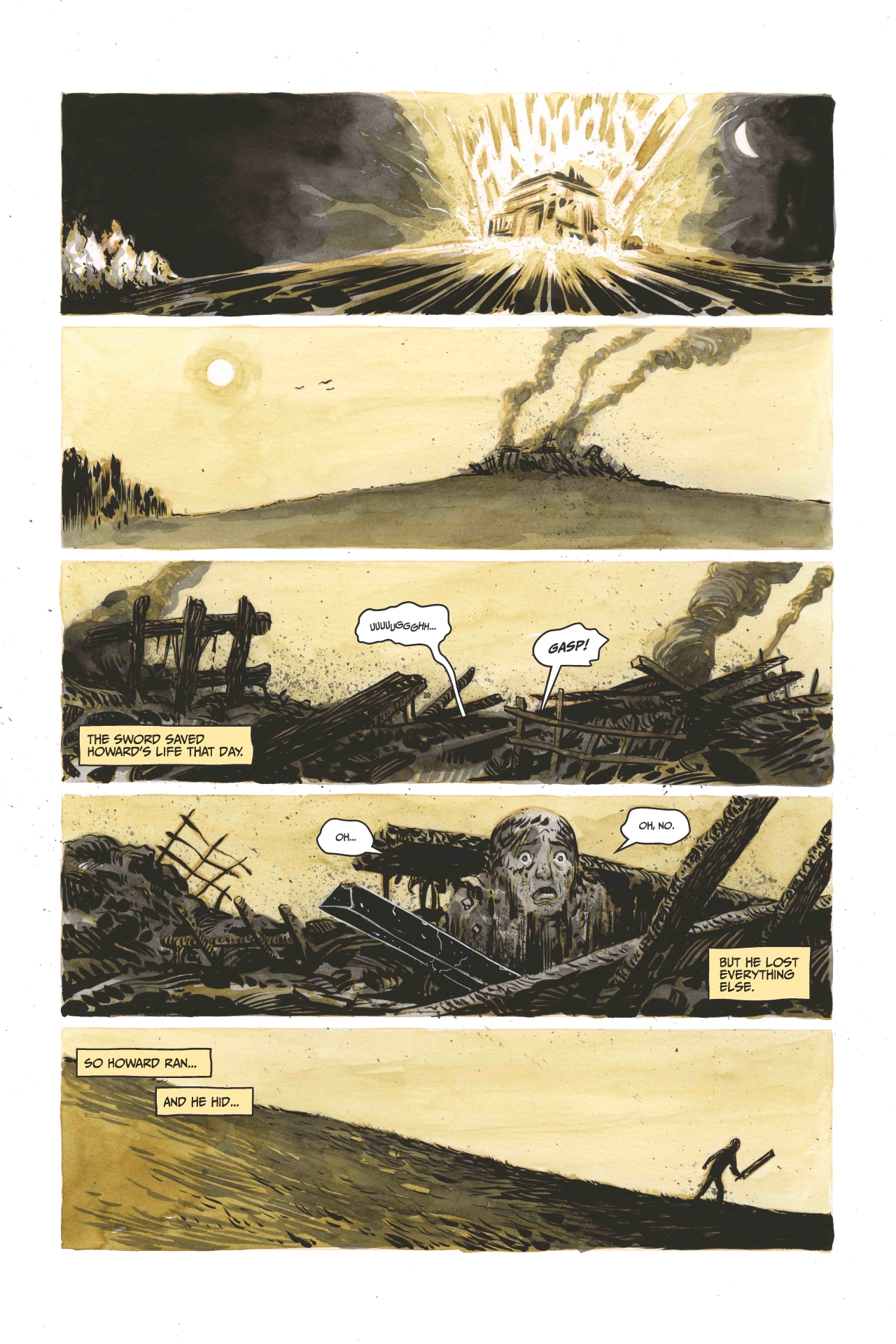
Nrama: Speaking of flashbacks, in the first couple pages we learned that Howard is this character who was brought up believing himself to be a monster hunter, but then that the people who told him that are kind of monsters themselves. Would you say there's clear good and evil in this story? Or is everyone just kind of gray?
Crook: I don't think the world of Lonesome Hunters has good guys and bad guys in the sense of white hats and black hats. They‘re basically people who are really struggling and trying to figure out what to do, how to live a good moral life in this world. You know, they don't have clear answers for that all the time. But I also don't feel like the story is making any sort of nihilist argument like we can't know the difference between good and evil. It's sort of just saying that everyone is just trying to be trying to deal with complex situations as much as they can.
Nrama: Understood. How is Howard going to deal with this complex situation after Issue One? He's been running from magic for a while, and now it's back in his life. How will he react?
Crook: One of the things I was telling this to somebody else, the crux of the story really is what it says on the cover, The Lonesome Hunters. It's about these really lonely people, Howard and Lupe. They find each other in this sort of shared dilemma, and they have to try to deal with it in a way that is going to take them both out of their comfort zone.
Howard decides to help this woman, despite the fact that maybe it's not the safest choice for him to make. In spite of his standard rule of operating. He decides to help her and it just opens up a can of worms. I can't say much about that or it would spoil it.
You know, that's sort of rooted in current times. That's where we're at. A good thing that can still happen is people finding each other and finding support in dark times.
Will The Lonesome Hunters become one of the greatest horror comics of all time? It's got some tough competition.

Grant DeArmitt is a NYC-based writer and editor who regularly contributes bylines to Newsarama. Grant is a horror aficionado, writing about the genre for Nightmare on Film Street, and has written features, reviews, and interviews for the likes of PanelxPanel and Monkeys Fighting Robots. Grant says he probably isn't a werewolf… but you can never be too careful.


